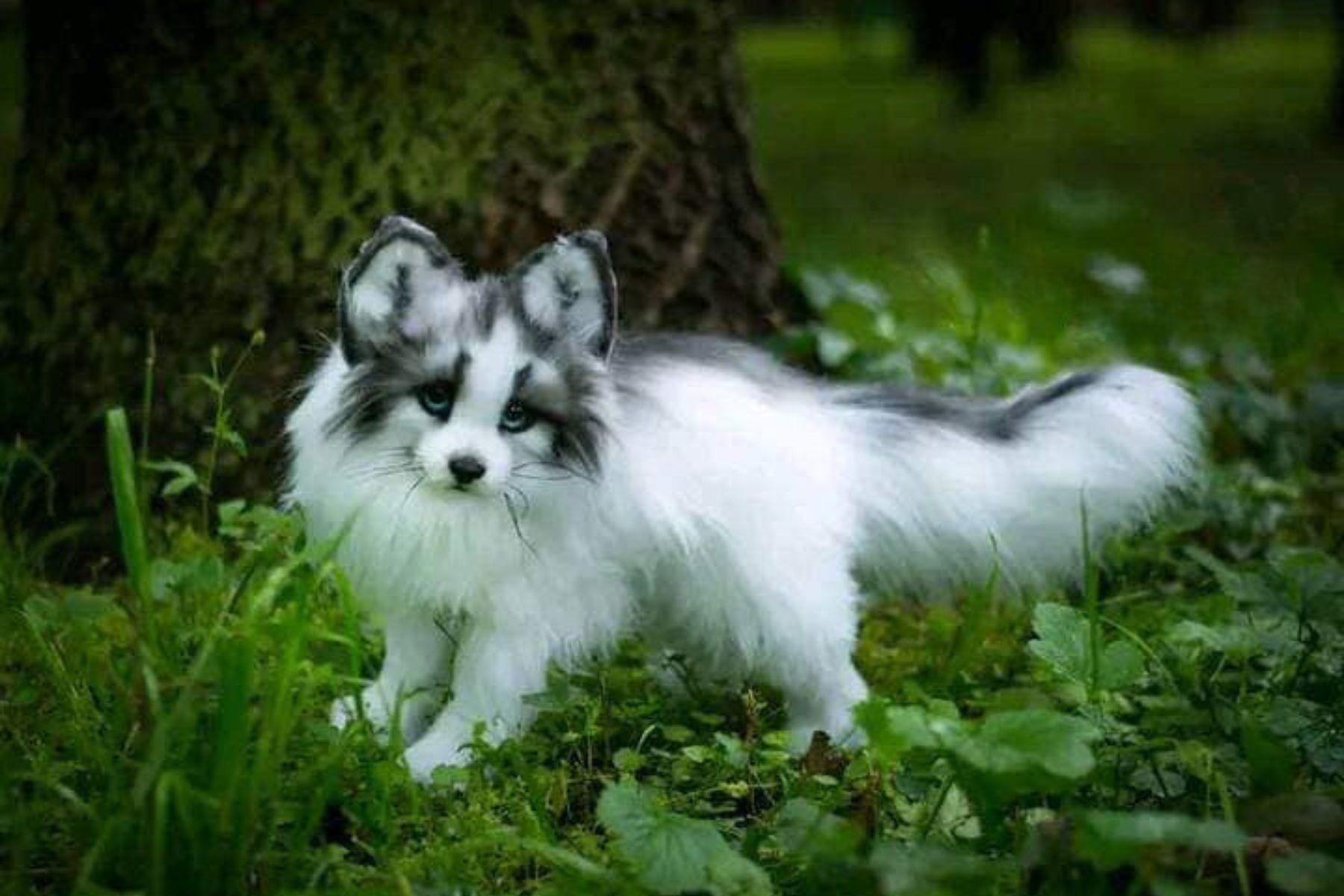In the realm of Canada’s diverse and enchanting wildlife, one creature. It emerges as a true gem of the Arctic wilderness – the Canadian Marble Fox. This captivating species, renowned for its striking marbled coat, has long been a subject of fascination for nature enthusiasts and wildlife aficionados.
In this comprehensive exploration, we embark on a journey into the captivating world of the Canadian Marble Fox. They shed light on its habitat, behavior, conservation status, and the remarkable attributes that render it a true Arctic treasure.
The Enigma of the Canadian Marble Fox
Scientific Classification:
- Kingdom: Animalia
- Phylum: Chordata
- Class: Mammalia
- Order: Carnivora
- Family: Canidae
- Genus: Vulpes
- Species: Vulpes vulpes
The Canadian Marble Fox, a captivating variant of the red fox (Vulpes vulpes), distinguishes itself with its mesmerizing marbled coat. This unique coloration, characterized by an interplay of silver, white, and black fur, has prompted admiration and intrigue. The origins of this distinctive hue are cloaked in mystery, yet it is believed to stem from a genetic variation, possibly a form of leucism.
Habitat and Range
The Canadian Marble Fox is predominantly found in the northern reaches of North America, particularly in Canada and Alaska. Moreover, adapted to the unforgiving Arctic and subarctic climates, these foxes inhabit a range of landscapes and exhibit the following habitat and range in Canada:
1. Arctic Tundra: The Canadian Marble Fox thrives in the Arctic tundra, an environment defined by treeless expanses, frigid temperatures, and an abundance of prey.
2. North American Presence: Although the name alludes to a specific geographic location, these foxes extend their habitat not only across Canada but also into parts of Alaska and other northern regions of the United States.
3. Ecological Versatility: Their adaptability allows them to occupy a spectrum of environments, including coastal areas, forests, and grasslands, attuning themselves to their surroundings.
Physical Distinctiveness

The most iconic feature of the Canadian Marble Fox is its breathtaking coat, which distinguishes it from its red fox counterparts. Several noteworthy physical characteristics of these foxes include:
1. Marbled Fur: The defining feature of their appearance, their marbled coat, is an exquisite fusion of silver, white, and black fur, crafting a visually captivating pattern. The allure of this unique pelage has, regrettably, made them a coveted target for fur traders, leading to pressing conservation concerns.
2. Size and Build: Resembling their red fox relatives in size and build, Canadian Marble Foxes typically weigh between 8 to 12 pounds and measure approximately 18 to 24 inches in height.
3. The Bushy Tail: Their long, bushy tail, a characteristic of many fox species, serves multiple functions, including aiding in balance, facilitating communication, and conserving warmth during the harsh Arctic winters.
4. Facial Features: Displaying classic fox-like traits, their features comprise a pointed snout, alert ears, and expressive eyes that convey intelligence.
Canadian Marble Fox Behavior and Adaptations
The Canadian Marble Fox’s survival in the demanding Arctic environment is facilitated by an array of fascinating behaviors and adaptations, which include:
1. Nocturnal Lifestyle: These foxes are predominantly nocturnal, exhibiting heightened activity during the nighttime hours. This behavior shields them from diurnal predators and allows them to capitalize on the cover of darkness for hunting.
2. Omnivorous Diet: Their diet is characterized by versatility, encompassing small mammals, birds, fish, insects, fruits, and vegetation. As opportunistic feeders, they adjust their dietary preferences in response to prey availability.
3. Solitary Nature: Canadian Marble Foxes typically lead solitary lives, with each individual establishing and defending its territory. They communicate through vocalizations, scent marking, and body language.
4. Winter Survival Tactics: To endure the harsh Arctic winters, these foxes grow a dense, insulating fur coat that ensures warmth. Additionally, their furry paws serve as natural snowshoes, enabling them to navigate snow-covered terrains with agility.
5. Territorial Behavior: These foxes exhibit territorial inclinations and employ scent marking to demarcate and safeguard their territories. Furthermore, aggressive displays may also be invoked to protect their turf.
6. Reproductive Habits: Breeding typically occurs in late winter, leading to the birth of a litter of kits (young foxes) in early spring. The female, or vixen, assumes responsibility for the care and nurturing of her young within the safety of the den.
Conservation Status
The Canadian Marble Fox confronts a series of challenges in terms of conservation, primarily stemming from the demand for its remarkable fur. This demand has precipitated trapping and hunting, thereby imperiling the species. As a response to these concerns, the Convention on International Trade in Endangered Species of Wild Fauna and Flora (CITES) has identified the Canadian Marble Fox as a species necessitating protective measures.
Diverse conservation organizations and governmental agencies have initiated actions to safeguard the Canadian Marble Fox. These measures encompass stricter regulations governing fur trading, wildlife management, and public awareness campaigns aimed at underscoring the significance of preserving these captivating creatures.
The Role of Indigenous Communities
Indigenous communities in Canada and Alaska play a pivotal role in the conservation and protection of the Canadian Marble Fox. Rooted in their profound connection to the land and its wildlife, these communities often function as guardians of the natural environment. Efforts to safeguard the Canadian Marble Fox are frequently collaborative endeavors, entailing the utilization of indigenous knowledge and practices.
Ethical Wildlife Tourism
The beauty of the Canadian Marble Fox in its native habitat, and ethical wildlife tourism offers a responsible approach. Reputable tour operators provide opportunities to observe these foxes in the wild without causing harm to the animals or their habitats.
Safety and Responsibility: When engaging in wildlife tourism, it is paramount to prioritize the safety and well-being of the animals. This ensures a harmonious coexistence between human observers and the creatures that inhabit these environments. Respectful distances should be maintained, feeding should be avoided, and all guidelines furnished by tour operators must be adhered to.
The Majesty of the Canadian Marble Fox
The Canadian Marble Fox serves as an emblem of the Arctic wilderness, a creature whose exquisite appearance and adaptability evoke admiration. Its unique marbled fur and graceful presence in the wild position. It is an animal that commands wonder and appreciation, underlining the importance of safeguarding the natural world’s marvels.
As we unravel the mysteries of these extraordinary creatures and recognize their role in the ecosystem. We underscore the importance of conservation endeavors. By preserving the habitats and populations of the Canadian Marble Fox. We not only protect a captivating species but also uphold the intricate web of life in the Arctic.
While these foxes may remain elusive and mysterious, their place in the natural world is unmistakable. It serves as a testament to the intricate balance of Arctic ecosystems. As we celebrate their majesty. Let us pledge to secure their future, ensuring that future generations can continue to be enthralled by the captivating beauty of the Canadian Marble Fox.


